Toshiba 55ZL2 glasses-free 3D TV Review
Toshiba 55ZL2 glasses-free 3D TV
With glasses-free 3D and 4k resolution, Toshiba's 55ZL2 is a genuine landmark telly.
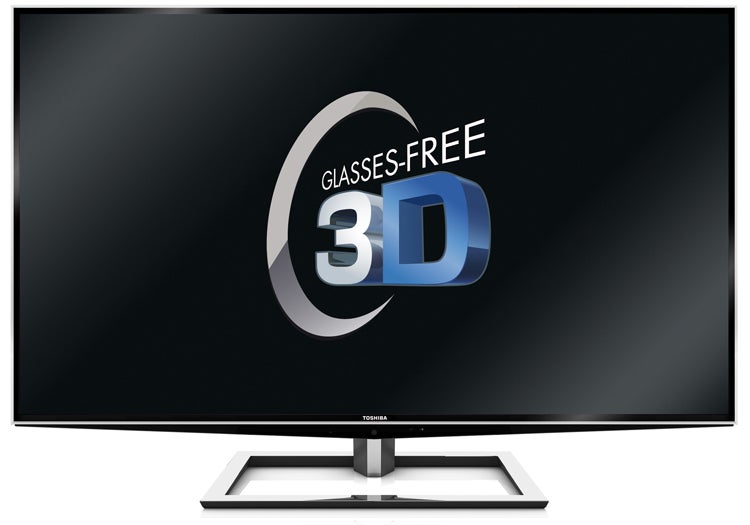
Verdict
Pros
- It supports native quad HD pictures!
- It lets you watch 3D without any glasses!
- Normal HD pictures look great too
Cons
- Focus and viewing position issues with 3D
- Not currently clear how normal folk will get native 4k material to play on the TV
- It costs £7k
Key Specifications
- Review Price: £6999.00
- 55in LCD with edge LED lighting
- glasses-free 3D playback
- Quad HD resolution
- Cevo Engine processing
- Toshiba places online service
If you need proof that a year is a long, long time in AV, look no further than the Toshiba 55ZL2 55in TV. For in the past 12-18 months this in many ways remarkable set has managed to deliver a phenomenal improvement to what Toshiba clearly initially thought was going to be its headline feature, while simultaneously finding the world’s interest unexpectedly shifting to what was clearly considered to be a distinctly secondary feature. To explain…
At its inception, the Toshiba 55ZL2 was all about one thing: glasses-free 3D. Back in the heady days of 2010 and early 2011, 3D was pretty much all anyone in the AV world was talking about. Despite the fact that consumers remained stubbornly, um, ‘non-committal’ about the addition of an extra dimension to their TV viewing.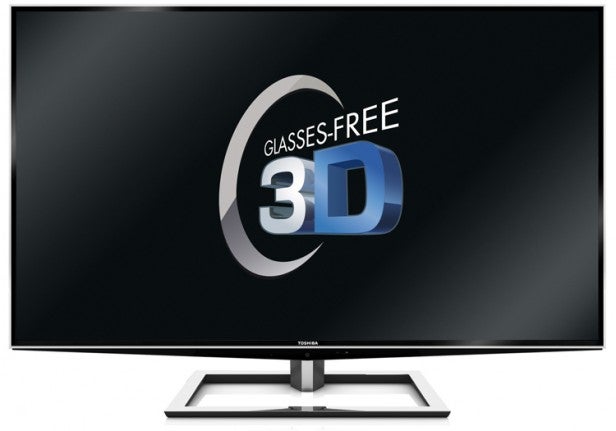
Almost every bit of consumer research undertaken around this time suggested that the main thing stopping Joe Public from sharing the AV industry’s love of 3D was the need to wear glasses. So it was no surprise to see various brands suddenly rolling out demonstration TVs capable of producing 3D without the need for glasses.
Toshiba names the day
Only one brand, though, actually committed to a launch date for its first glasses-free 3D. That brand was Toshiba, which claimed it would have a glasses-free 3D TV available to buy before the end of April 2012. And true to its word, arriving in the UK just before May struck is the 55ZL2.
Given the amount of technical issues involved in getting around using glasses for 3D viewing, Toshiba’s speed in getting the technology to market is startling. Yet it’s still arguably not happened quite fast enough. For 3D is apparently already plummeting down the list of reasons to buy a new TV. Which brings us to the 55ZL2’s rather handy plan B.
Toshiba realised early on that if you wanted to deliver a really satisfactory glasses-free 3D experience, you couldn’t get away with just using a normal Full HD-resolution panel. There wouldn’t be enough pixels to go round. So the brand took the expensive decision to build its glasses-free 3D debutante with a native ‘quad HD’ (or near 4k) resolution of 3840×2160 pixels. And ironically it’s this ultra-high resolution that’s suddenly catching people’s eye more than the glasses-free 3D.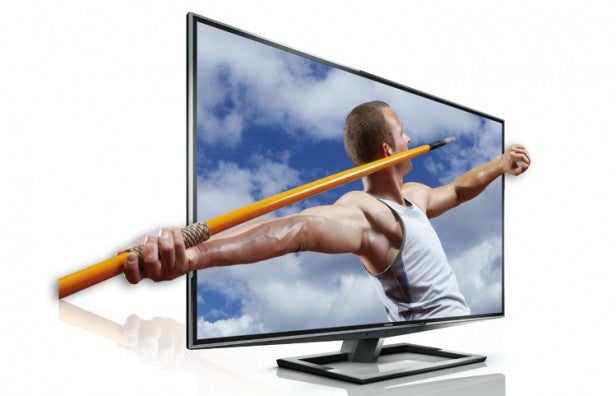
It’s a royal shame, then, that at the time of writing, the 55ZL2’s focus on 3D, and the inclusion of 4K merely as a way of delivering that 3D, appears to have meant that Toshiba hasn’t thought seriously enough about how to enable consumers to actually make the most of the 55ZL2’s 4k capabilities.
4K how?
During our tests we just couldn’t see any way for the 55ZL2 to take in native 4k video sources via any of its standard inputs. Photos are fine; these played back – and looked downright, mind-blowingly spectacular – straight through the set’s USB ports. But when it comes to video, even hooking up via HDMI, the 4k-outputting PC we received with Sony’s VW1000 failed to get us any 4K action on the 55ZL2. The PC would only register that a 1920×1080 devices was attached to it, not a 4K one. So it wouldn’t give us the option to set its output resolution to 4k.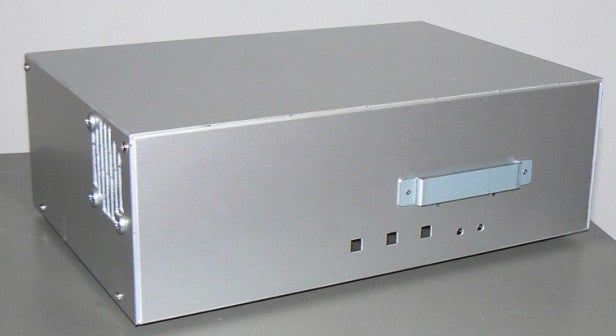
It’s possible, we guess, that should some new 4K disc delivery standard be created the Toshiba 55ZL2 might be compatible with that. But all the advice we’ve received from Toshiba is that the HDMIs will never be able to take 4K video, no matter what the source.
All of which probably has you wondering how the heck we managed to test the 55ZL2’s 4K video capabilities for this review. The answer is that Toshiba sent us one of the specially designed 4K server boxes it has developed for dealers who want to show consumers in-store 4K demos. These servers connect to the TV using a chunky digital serial port rather than any standard commercial connection, and seemingly do nothing other than just play the few minutes of 4k showreel they contain. There doesn’t seem any way for consumers to get one of these servers for themselves and put other 4K content on it.
Making the Toshiba 55ZL2’s lack of current and, seemingly, future Quad HD source compatibility all the more tragic is that when it’s fed a 4k image, its pictures are simply staggering. Fears that you might only appreciate the impact of so many extra pixels of picture information on projection-sized screens are instantly put to bed, as the 55ZL2’s 55in screen proves amply large enough – even from an entirely standard viewing distance – of underlining just why we feel that 4k rather than 3D represents the long-term future of TV.
Quad HD changes everything
The Quad HD demo reel, which contained a variety of real video footage ranging from street scenes to woods and inviting-looking pools, looks nothing short of revolutionary, and incredibly tangible, for want of a better word. Basically the extra detail in the picture makes you forget you’re watching a TV and transports you almost viscerally to the place you’re watching. 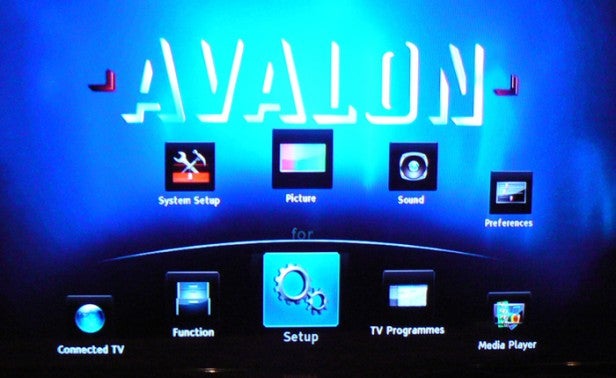
You don’t have to be an experienced TV reviewer or even AV enthusiast to see the difference, either; we invited in a procession of perfectly ordinary and in some cases tech-cynical men and women to see the Toshiba 55ZL2 in all its 4K glory, and not a single one failed to be gobsmacked by what they were witnessing. Honestly, it’s an experience that really does have to be seen to be believed, and instantly allows the 55ZL2 to claim the finest picture quality ever seen on any TV.
Of course, though, with fancy dedicated 4K servers and non-standard digital interfaces not readily available to the world at large, for most people the 55ZL2’s 4K talents will be restricted to its ability to upscale standard and normal high definition sources to its quad HD native pixel count. So it’s just as well that with HD sources, at least, the upscaling system works quite well.
Full HD into Quad HD will go
Activating Toshiba’s Resolution upscaling engine – driven by the set’s built-in, proprietary and uber-powerful Cevo Engine processors – HD pictures receive noticeable extra detailing and crispness, without noise levels being aggressively increased. It must be said that upscaled full HD pictures aren’t nearly as pure and just plain beautiful as native 4K ones, but any improvement on the full HD images found on lower-resolution TVs has to count as a significant justification for at least a chunk of the 55ZL2’s price.
The upscaling engine fails to bridge the gap particularly well between standard definition and the panel’s 4k resolution, though, as even the Cevo Engine can’t calculate the vast amounts of extra pixels of image data it needs to without leaving the image looking somewhat noisy and soft. 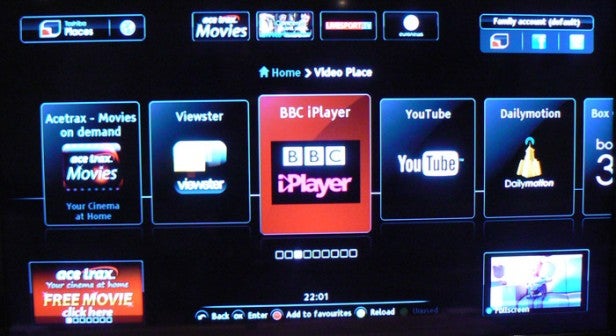
Shifting our gaze to the Toshiba 55ZL2’s other innovation, the glasses-free 3D, it must be said right away that Toshiba has improved the technology hugely since we first saw it in action. The painfully obvious vertical ‘seams’ in the picture have gone, and 3D Blu-rays look much more detailed, less soft and just more “HD” than they did before. The sense of depth in the image has been increased, too, without sacrificing foreground sharpness, and the fact that you’re not wearing glasses means that 3D images enjoy just as much colour dynamism and extreme brightness as the screen delivers in 2D mode.
That you don’t have glasses on also makes the experience seem much less artificial and vastly less fatiguing on your eyes. Toshiba has even managed to cater for as many as nine different seating positions for the 3D effect, with a built-in camera on hand to track where each viewer is and automatically calculate the 3D picture output accordingly.
There are, though, still some significant barriers to becoming totally invested in the Toshiba 55ZL2’s glasses-free 3D experience. For starters, backdrops and objects in the far distance almost always look a bit soft and out of focus. Also, the picture generally betrays a few signs of the physical structure of the lenticular lenses used on the screen’s surface to produce the 3D effect – including a couple of areas of really distracting wavy lines on our test sample.
Sit still
Finally, if you move your head more than around 6in from the point it was at when the TV tracked your position, the image shifts out of focus dramatically. And it has to be said that having to sit stock still rather flies in the face of the ‘free’ sensation of not wearing glasses.
Overall the glasses-free 3D effect feels very clever, but still ultimately more like a work in progress than the sort of high quality finished article a serious cinephile might spend £7k on.
Looking beyond the Toshiba 55ZL2’s Quad HD and glasses-free 3D skills, its picture performance is generally strong. As with Toshiba’s more mainstream Cevo Engine sets, the YL863 and WL863s, colours look exceptionally bold and rich; black levels are impressively deep and only marginally affected by edge LED’s backlight consistency issues, and motion looks clear and reasonably fluid.
The Places to be
Having been unable to resist getting more or less straight into assessing the 55ZL2’s groundbreaking pictures, we ought to quickly cover a few other features of the set before we wrap up. First, it’s equipped with Toshiba’s Places online service, with its familiar attractive menus but lack of content versus rival platforms.
It can also play a wide range of multimedia files via USB sticks or DLNA-enabled PCs, and is well equipped with picture calibration tools, including colour management and gamma controls. The TV can even calibrate itself via Toshiba’s TPA-1 colour meter-equipped auto-calibration package – though you’ll have to add £200 or so to the 55ZL2’s price if you want to bag yourself a TPA-1 pack.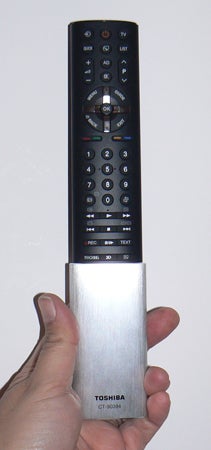
The 55ZL2 is a surprisingly pretty TV considering how much cutting edge tech it has crammed inside, while its revolutionary picture efforts haven’t been used as an excuse to forget about audio. In fact, the 55ZL2’s soundstage is more punchy, dynamic and natural sounding than that of the majority of slim TVs.
Finally we measured the 55ZL2’s input lag to see how it shapes up as a potential gaming screen. And using the game mode we managed to get a figure of just 34ms – entirely acceptable for such an advanced TV.
Verdict
There’s a part of us – the part that has already fallen in love with 4k/Quad HD – that wants to praise the 55ZL2 to the rafters. For in its full 4K glory it produces pictures the likes of which we’ve never seen before from a TV.
Toshiba also deserves credit for working so hard to make its glasses-free 3D performance better than expected.
However, the glasses-free 3D system is still far from perfect and worse, the 55ZL2‘s lack of support for 4k via its HDMI ports means that hardly anyone will actually ever be able to experience its 4k joys for themselves outside the confines of a shop.
So decent and, indeed, groundbreaking though the 55ZL2’s Quad HD upscaling processing might be, ultimately we can’t help but think that if we owned a 55ZL2, we’d forever be sat there feeling the pain of knowing that, digital still photos aside, we’ll never be able to see it running at its jaw-dropping best. And feeling pain after spending £7,000 is not a feeling we feel able to recommend, however bittersweet that pain might be.
How we test televisions
We test every TV we review thoroughly over an extended period of time. We use industry standard tests to compare features properly. We’ll always tell you what we find. We never, ever, accept money to review a product.
Trusted Score
Score in detail
-
Features 9
-
3D Quality 6
-
Value 5
-
Design 9
-
2D Quality 9
-
Sound Quality 8
Features
| Size (Inch) | 55in |
| Display Type | LED |
| Max. Resolution | 1920 x 1080 |
| Full HD 1080p | Yes (Quad HD actually!) |
| Digital Tuner | Yes |
| Freeview HD | Yes |
| Freesat HD | No |
| 3D Ready | Yes (glasses-free) |
| Contrast Ratio | 9,000,000:1 |
| Refresh Rate (Hertz) | 800Hz |
Connectivity
| HDMI | 4 (v1.4) |
| Component | 1 |
| Composite | 1 |
| Scart | 1 (RGB) |
| Digital Audio Out | 1 (optical) |
| Headphone | 1 |
| Charging/Computer Connection | 3 |
| Ethernet | 1 |
| WiFi | Yes (built-in) |
Physical Specifications
| Height (Millimeter) | 832mm |
| Width (Millimeter) | 1253mm |
| Depth (Millimeter) | 357mm |
| Weight (Gram) | 30.5g |

